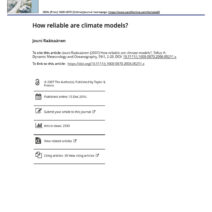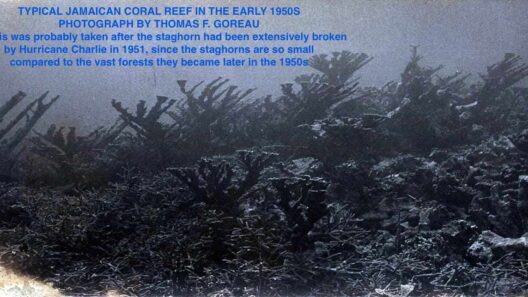Nigeria’s vast landscapes, from the bustling urban sprawls of Lagos to the serene rural expanses in the north, are imbued with a rich tapestry of culture and biodiversity. Yet, beneath this vibrant surface, a somber reality brews. Global warming, often perceived as a distant threat, has begun to infiltrate the very essence of Nigeria’s climate, reshaping weather patterns and imposing a vivid narrative of struggle against the elements.
As the globe warms, the delicate equilibrium of Nigeria’s meteorological systems is upended. The country, endowed with multiple climate zones ranging from humid tropical in the south to arid in the north, is on the brink of metamorphosis. The rains that once heralded the planting season now resemble a fickle partner, arriving unpredictably or, worse, not at all. This transformation can be likened to a maestro losing control of an orchestra; the harmonious rhythms of the rainy season are replaced with dissonance and unpredictability.
At the onset of every rainy season, farmers traditionally prepared their fields, eagerly awaiting the nourishing waters to breathe life into their crops. However, the specter of climate change has distorted this age-old practice. Farmers are now caught in a web of uncertainty, constantly recalibrating their calendars as the rains arrive late or not at all. The agrarian backbone of Nigeria, which employs over 70% of the population, faces a profound existential crisis. The resultant droughts and erratic rainfall disrupt not only agricultural productivity but also jeopardize food security for millions.
In the northeastern regions, where the delicate balance between the Sahel and savanna ecosystems holds sway, the situation becomes even more dire. Here, the atmosphere thickens with tension as climate-induced desertification creeps insidiously across the landscape, encroaching upon the already fragile agricultural zones. Communities that once thrived in this delicate environment find themselves grappling with dwindling resources. The metaphor of a withering flower aptly describes the fate of these once-vibrant communities as they struggle to adapt to a harsher, more arid climate.
While the waves of drought invade the land, the southern coasts of Nigeria are embroiled in their own climatic aberrations. The Gulf of Guinea, which nurtures the growth of marine life and supports extensive fishing communities, is captivated by warming waters. This phenomenon not only depletes fish stocks vital for livelihoods but also precipitates severe coastal erosion. The picturesque beaches that once attracted millions of tourists are now receding, further compounding the economic woes of those reliant on the tourism sector.
Furthermore, the pangs of climate change manifest through unprecedented flooding. As rainfall becomes diabolically voluminous, riverine communities face the specter of deluge. In cities like Lagos, where infrastructure is ill-equipped to handle significant rainfall, the streets become insurmountable obstacles as they are transformed into torrents. Homes and businesses are inundated, forcing residents to reckon with the reality of climate adversity. The metaphor of a tempestuous sea, careless and unpredictable, evokes the chaos wrought by these extreme weather patterns.
The impacts of shifting climate patterns extend beyond agriculture and tourism; they infiltrate the socio-political fabric of Nigerian society. As resources become scarce, tensions rise. Conflicts over land and water escalate, propelling communities into disputes that are not just local but also transcend regional boundaries. The metaphor of a ticking time bomb resonates as society becomes increasingly fragile, with ecological challenges paving the way for political upheaval.
Nevertheless, within this grim tapestry, there lies a potential for resilience and adaptability. Nigerian innovation and grassroots movements are emerging as agents of change, tasked with confronting these climatic challenges head-on. Sustainable agricultural practices, such as agroforestry and the implementation of drought-resistant crop varieties, are being championed by local farmers. This narrative of resilience paints a picture of a phoenix rising from the ashes, embracing the challenge rather than yielding to defeat.
Moreover, awareness campaigns aimed at educating citizens about climate change impacts serve as a beacon of hope. Communities are rallying together to combat the assaults of climate adversity, fostering a sense of solidarity. By integrating traditional knowledge with modern sustainability practices, Nigeria has the potential to weather the storms ahead. The metaphor of the mighty baobab tree, with its deep roots anchoring it firmly in the ground while its branches reach out toward the heavens, encapsulates the spirit of resilience that is emerging amongst the populace.
In the grand narrative of global climate change, Nigeria stands at a critical juncture, with its unique challenges and opportunities converging. The weather woes that plague this diverse nation are emblematic of a broader crisis affecting regions worldwide. Such a moment calls for a collective awakening, a resounding acknowledgment that the health of the planet is intrinsically linked to the vitality of its inhabitants.
Ultimately, the journey towards a sustainable future necessitates collaborative action—local communities, governments, and international entities must unite in a concerted effort. By fostering innovative practices, investing in climate-resilient infrastructure, and creating policies rooted in sustainability, the narrative of Nigeria’s climate pattern transformation can morph from one of despair into a tale of empowerment and renewal.
Through reflective action and collective will, the hallmark of resilience can indeed transform Nigeria’s weather woes into a testament of human ingenuity and spirit. It is in this relentless pursuit of sustainability that hope can be renewed, revitalizing both the land and its people for generations to come.






